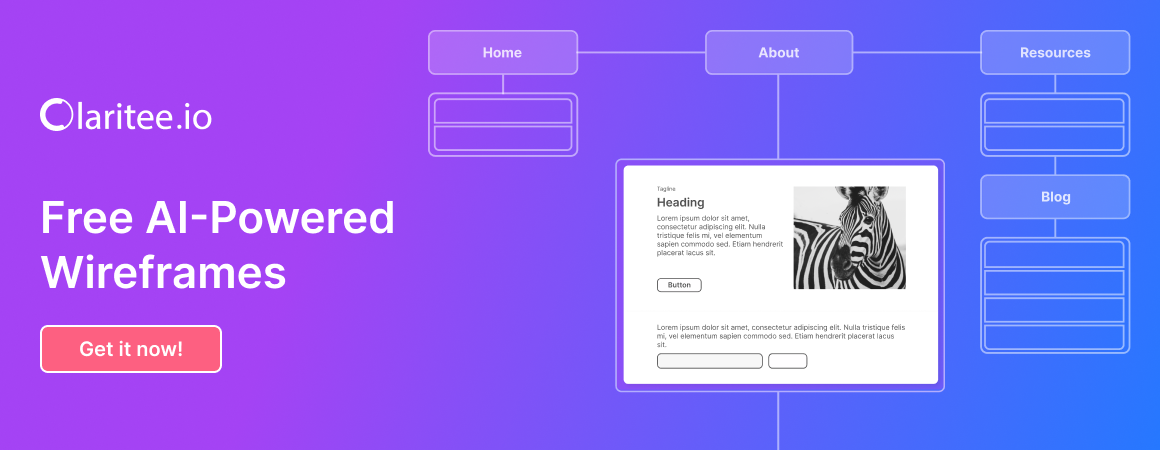A Sitemap Is a Blueprint, Not Just a Drawing. Which Tools Treat It That Way?
A sitemap is the most critical document in any web project. It is the architectural blueprint, the scope of work, and the “visual contract” all in one.
Yet, most teams are still using tools that treat this critical document like a casual sketch. A sitemap tool that only generates a diagram—even with AI—is just a suggestion. It is not an agreement.
A professional sitemap tool must do two things:
- Generate a Robust Plan: Quickly create a visual sitemap that can be customized and hold detailed requirements.
- Lock in the Agreement: Provide a formal, auditable system for clients and stakeholders to approve that plan.
We reviewed the top tools to see how they stack up on both points.
The Market Review: Who Actually Aligns Your Team?
1. Relume
Relume is an AI-powered powerhouse, famous for its deep integration with Webflow and its massive component library (Source 1.1).
- Pros:
- Excellent AI Generation: Incredibly fast at creating logical sitemaps from a simple prompt.
- Massive Webflow Component Library: A huge time-saver if your end-goal is a Webflow site (Source 1.1).
- Cons:
- No Formal Approval System: This is the critical gap. Its “collaboration” is just informal commenting. It has no formal approval-tracking or auditable audit-trail for client sign-offs.
- Templated, Non-Custom Wireframes: The wireframes are pre-structured (Source 1.2, 2.3). You are locked into their components and cannot do custom wireframing, which is a deal-breaker for most professional, custom-scoped projects.
- It’s an Ideator, Not an Accountability Tool: It’s built to create suggestions for a specific platform (Webflow), not to lock in a contract.
2. Octopus.do
Octopus.do is a clean, dedicated visual sitemap builder that is great for getting a high-level overview of a project.
- Pros:
- Strong Visual Builder: A clean, intuitive drag-and-drop interface for building sitemap structures (Source 3.1).
- Good for a High-Level Overview: It’s excellent for visualizing the “shape” of a project and getting a quick sense of the page hierarchy.
- Cons:
- No Formal Approval System: Like the others, it’s a planning tool, not an approval tool. It lacks a “decision-rememberance” portal and has no auditable sign-off system (Source 4.1).
- No Wireframing: This is its critical failure. It only provides basic content outlining per page (Source 4.2). It’s a partial fix. You cannot use it for robust planning or to align your designers and developers around actual page requirements.
3. Miro
Miro is the king of the digital whiteboard, an infinite canvas for brainstorming (Source 5.1).
- Pros:
- Ultimate Flexibility: An infinite canvas for massive, real-time brainstorming and user-journey mapping.
- Great for Workshops: Perfect for live, collaborative sessions to get all ideas out (Source 5.1).
- Cons:
- No Structure: It is a “messy whiteboard,” not a sitemap. It has no hierarchy, logic, or connection to requirements.
- Zero Accountability: It is the opposite of an approval tool. It’s a “living document” of suggestions with no formal approval system, making it a liability to use as a “final” blueprint.
The Solution: A Tool That Solves All the Gaps
The review above shows a clear pattern: tools are either for Webflow-specific ideation (Relume), high-level overviews (Octopus.do), or chaotic brainstorming (Miro). None are complete, professional platforms.
This is the exact gap Claritee was built to fill.
Claritee: The Professional “Auditable Blueprint”
Claritee is the only platform that combines the speed of modern AI with the robust, custom planning and accountability that professionals need (Source 7.1).
- Pros:
- AI & Robust Visuals: It has AI sitemap generation (from prompts or a URL) and a robust visual builder (Source 7.1).
- Fully Custom, “Smart” Wireframes: This is the key difference. Unlike Relume, the wireframing is fully custom, drag-and-drop, and not templated (Source 7.3). And unlike Octopus, it’s not just an “outline”; each sitemap page holds a full, detailed wireframe with all its requirements.
- THE KEY FEATURE: Formal Approval Audit-Trail: This is the non-negotiable. Claritee is a “decision-rememberance portal.” You send a simple, ‘no-login’ share link to your client (Source 7.3). Their “Approve” click is logged as a permanent, timestamped, unchangeable record.
- Cons:
- It’s a structured tool for building professional, custom blueprints, not an infinite “messy” canvas for team-building exercises.
⭐ Recommendation: Stop Using a “Suggestion” as a “Contract”
If you just want a suggestion for a Webflow site, use Relume. If you just want a high-level overview, use Octopus.do.
But if you are a professional who needs to create custom plans, align your entire team, protect your profit, and create an auditable “visual contract,” you need a tool that was actually built for the complete job.
Stop using a sitemap that’s just a suggestion. Get your free, auditable blueprint at claritee.io.

